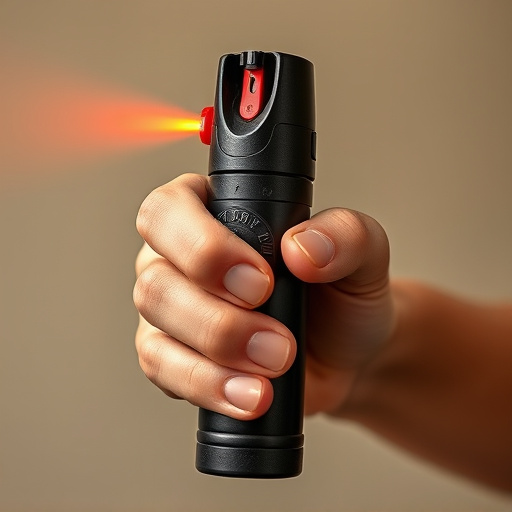Mastering the best bear spray application techniques involves aiming at a bear's face (eyes, nose, mouth) from 2-3 meters away, spraying for 2-3 seconds in short bursts, and immediately retreating. Proper handling, understanding product range, and practice in controlled settings are key. After exposure, remove contaminated clothing, wash affected areas, and seek medical attention. Regular training enhances calm response in high-risk situations.
In regions where wildlife encounters are common, understanding protective measures like inflammatory agent personal protection spray (bear spray) is crucial. This article delves into the world of bear spray, exploring its composition, effectiveness, and optimal application techniques—essential skills for outdoor enthusiasts. We’ll guide you through post-exposure care and safety measures, ensuring you’re equipped with the best practices for using this powerful tool. Learn how to maximize protection and navigate potential risks effectively.
- Understanding Bear Spray: Its Composition and Effects
- Effective Application Techniques for Optimal Protection
- Post-Exposure Care and Safety Measures
Understanding Bear Spray: Its Composition and Effects
Bear spray, a potent inflammatory agent personal protection spray, is designed to deter aggressive bears when used correctly. Its composition typically includes capsaicin, an ingredient found in chili peppers, along with other chemicals and water. This powerful blend creates a burning sensation in the bear’s eyes and nose, temporarily blinding and disorienting it, allowing for a safe escape.
When discussing the best bear spray application techniques, it’s crucial to understand that the spray should be aimed at the bear’s face—eyes, nose, and mouth. The recommended distance is approximately 2-3 meters (6-10 feet). Users should spray in short bursts, typically 2-3 seconds, and move away quickly after application to ensure the bear is deterred without escalating the situation. Proper handling and knowledge of the product’s range and effectiveness are key to ensuring safety in bear country.
Effective Application Techniques for Optimal Protection
When it comes to effective inflammatory agent personal protection spray, such as bear spray, understanding and practicing the best application techniques is crucial for optimal protection. The key lies in ensuring thorough coverage while maintaining a safe distance. Aim for the face, eyes, and respiratory system of the potential threat, as these areas are sensitive and vulnerable points of entry for irritants. Holding the canister at a close range (around 3-4 feet) allows for a fine mist distribution, maximizing the spray’s impact without wasting any product.
For optimal results, it’s essential to follow a consistent application pattern. Pumping or spraying in quick, even bursts for 2-3 seconds is recommended. This method ensures that the agent reaches its target area efficiently while providing enough time for the subject to retreat. Remember, practice makes perfect. Rehearse these techniques in controlled settings to build confidence and ensure you can deploy the spray effectively when needed.
Post-Exposure Care and Safety Measures
After an exposure incident, proper post-exposure care becomes crucial for minimizing potential harm and ensuring safety. If a person has been sprayed with an inflammatory agent, such as bear spray, immediate actions should include removing any contaminated clothing or gear, gently washing the affected areas with mild soap and water, and thoroughly rinsing to eliminate any remaining chemicals. It’s important to seek medical attention if irritation, pain, or difficulty breathing persists.
Regarding safety measures, understanding the best bear spray application techniques is vital. Aim for a direct spray towards the face and eyes of the potential threat, as this can effectively disable and deter aggressive animals. Always keep the spray can at arm’s length and ensure a clear path for deployment during encounters. Regular training and familiarization with the spray’s usage and range will enable individuals to respond calmly and confidently in high-risk situations.
When it comes to protecting yourself from unexpected encounters with bears, understanding how to effectively apply your inflammatory agent personal protection spray is key. By mastering the best bear spray application techniques discussed in this article, such as aiming for facial and respiratory targets, you can significantly increase your safety in bear country. Remember that proper post-exposure care and following safety measures are equally vital to ensure minimal risk and prompt recovery. Stay informed, be prepared, and enjoy your outdoor adventures with enhanced peace of mind.
